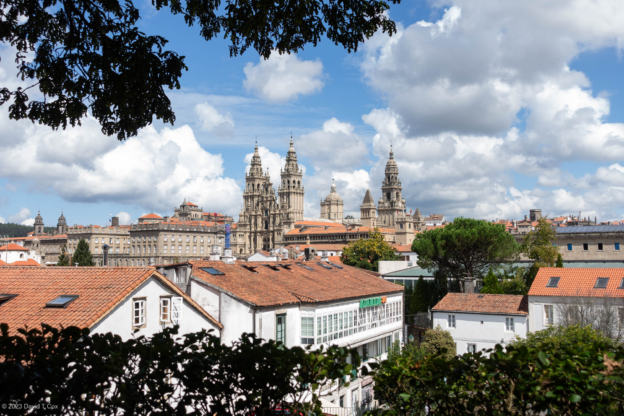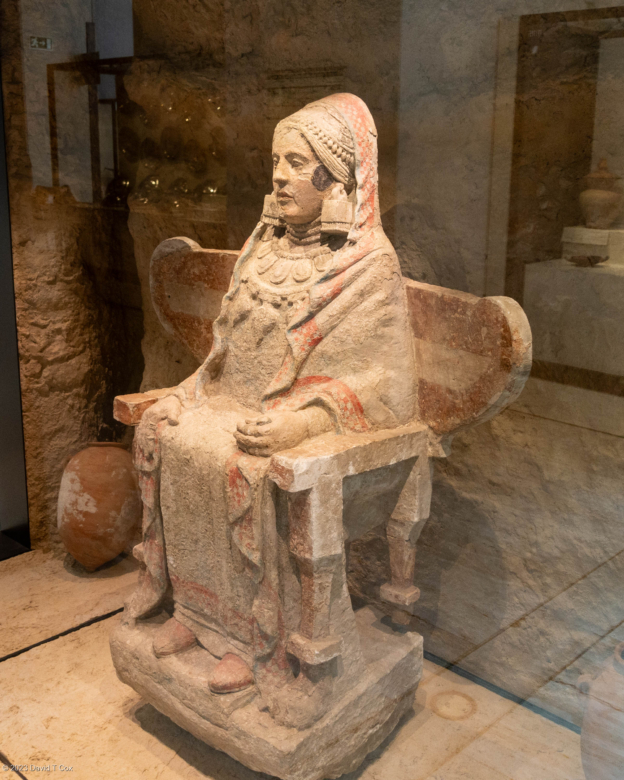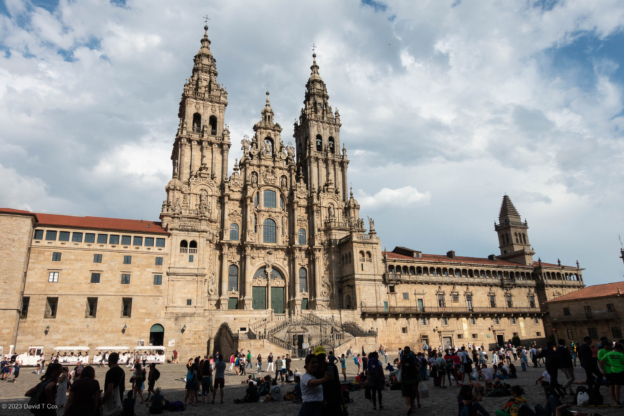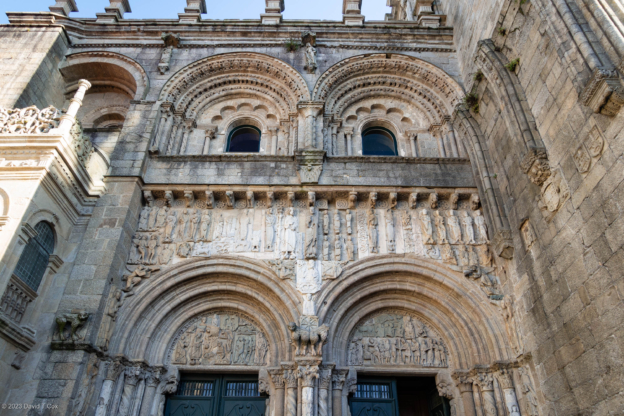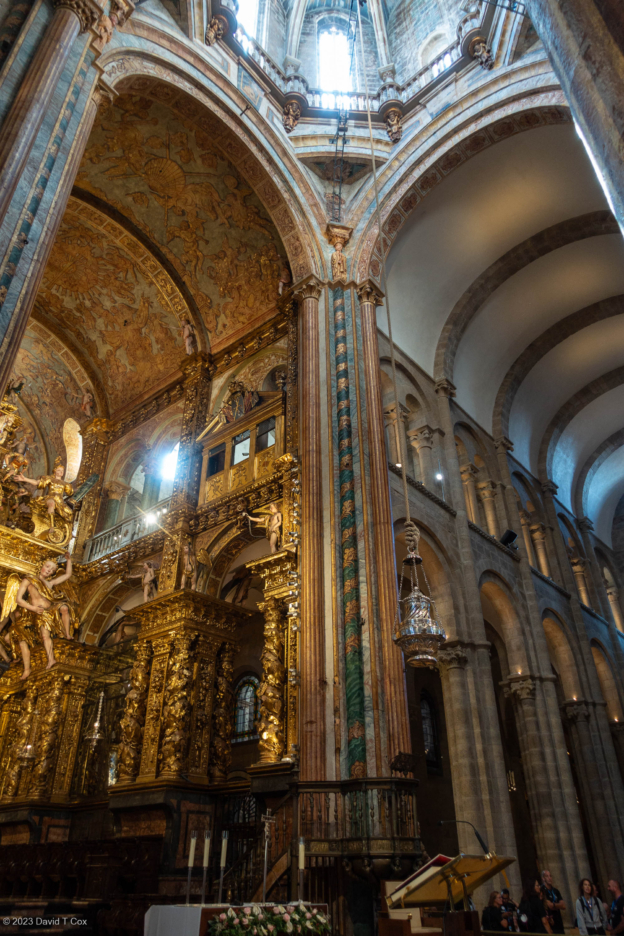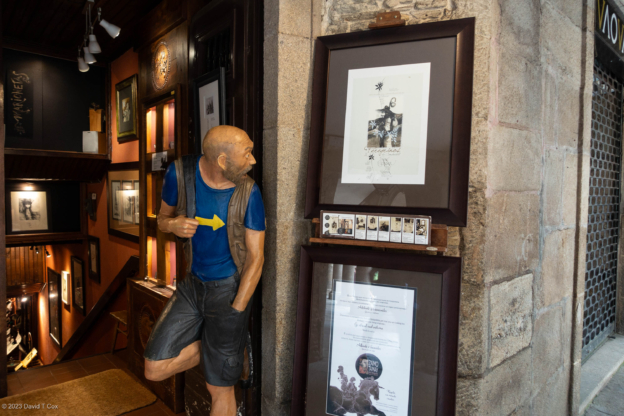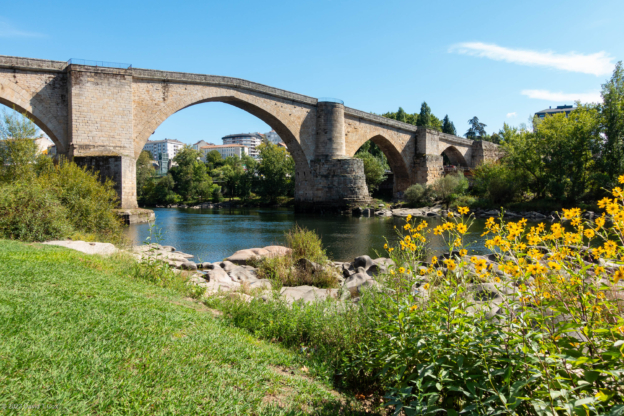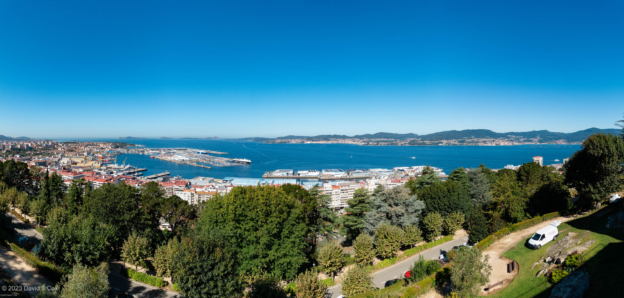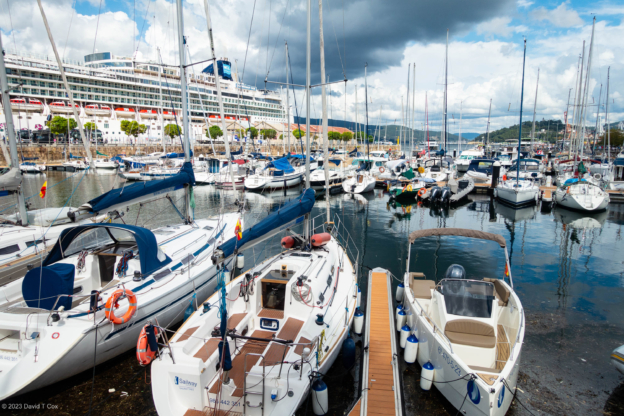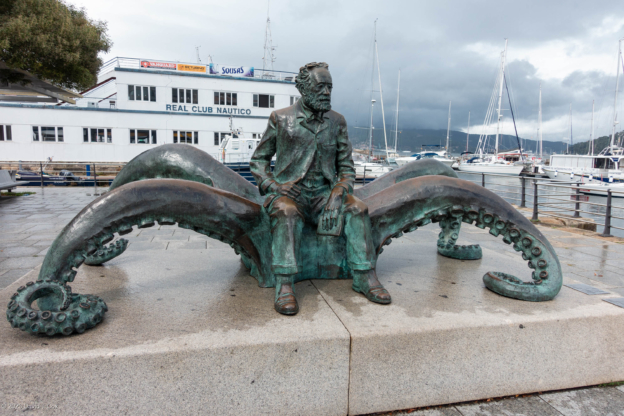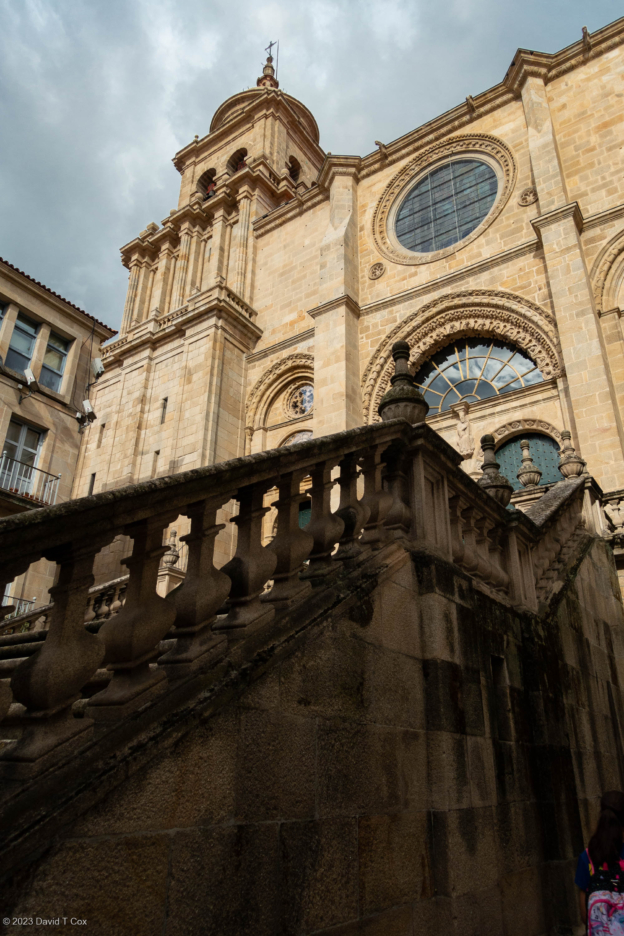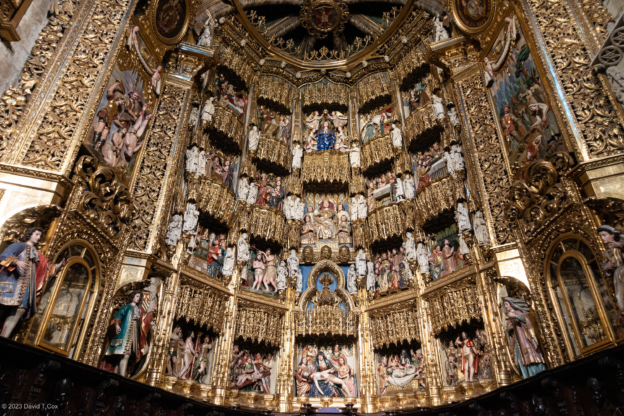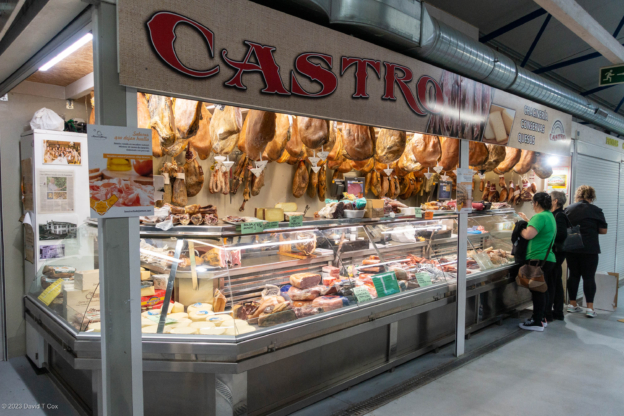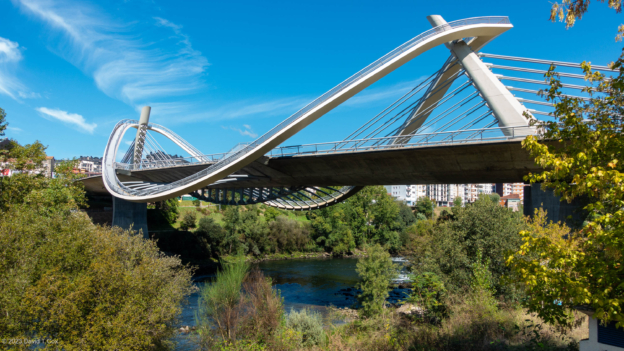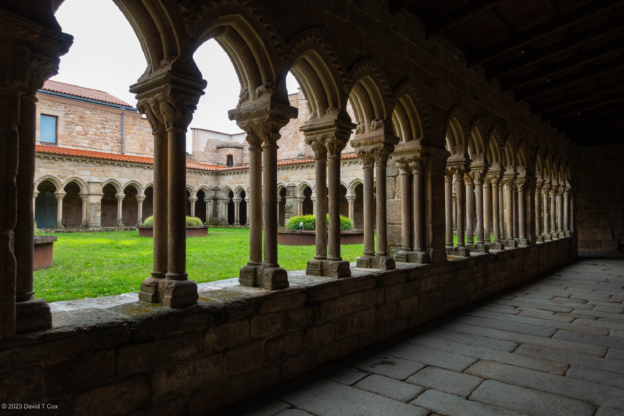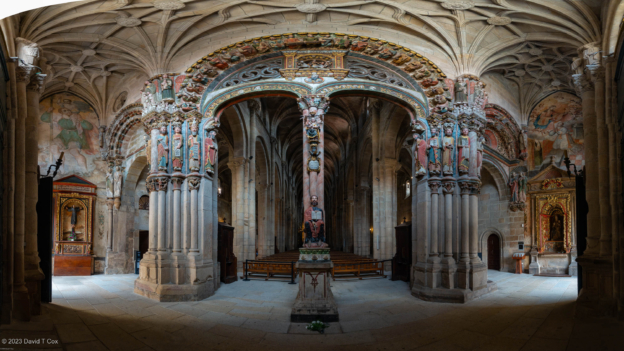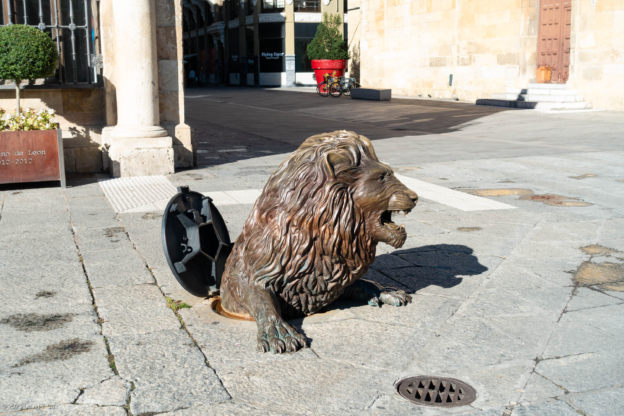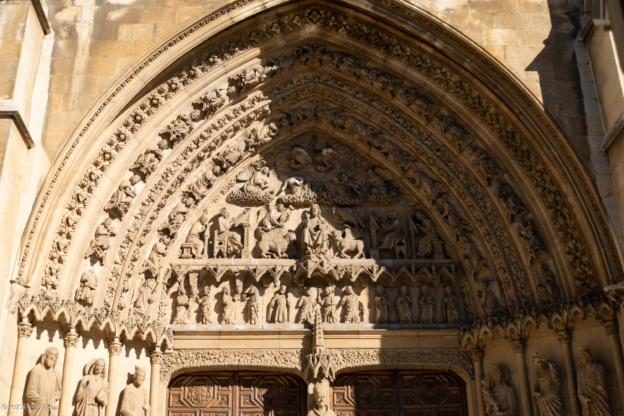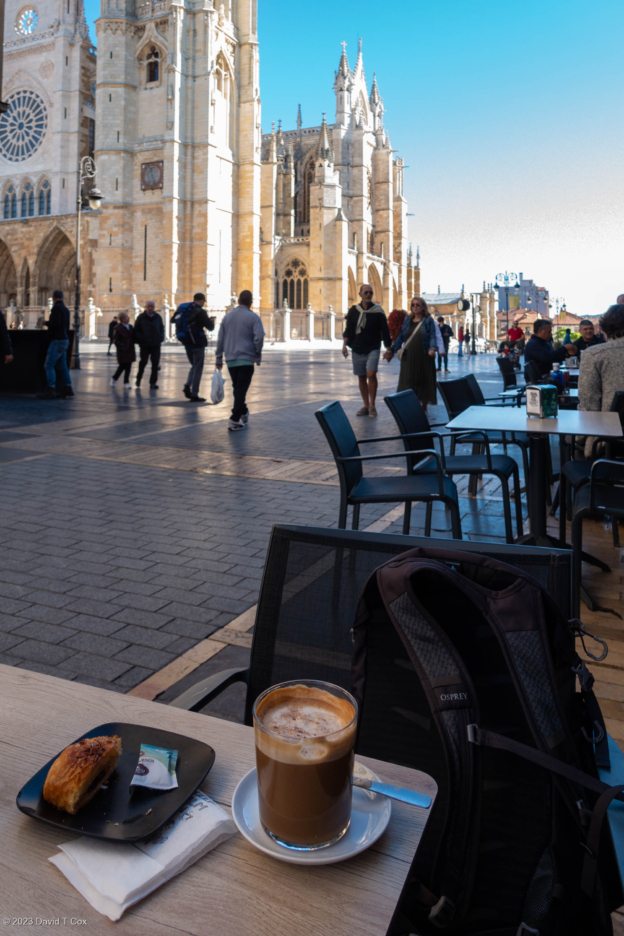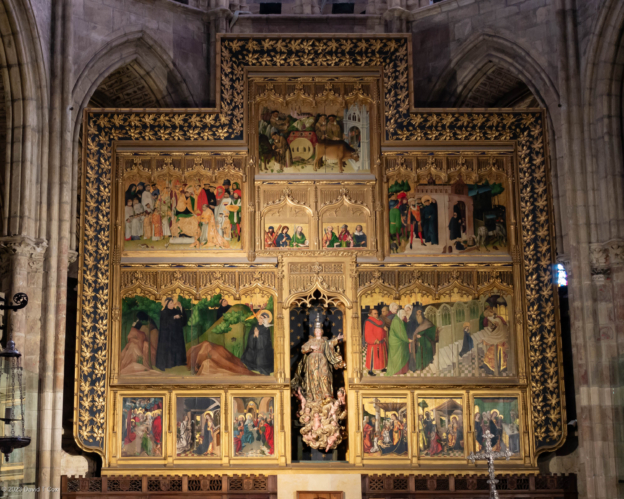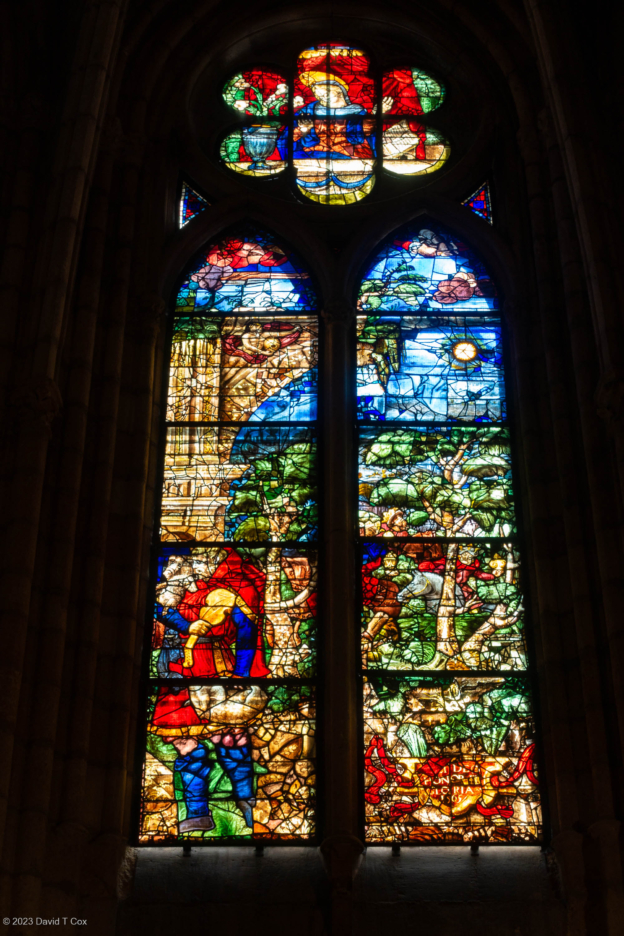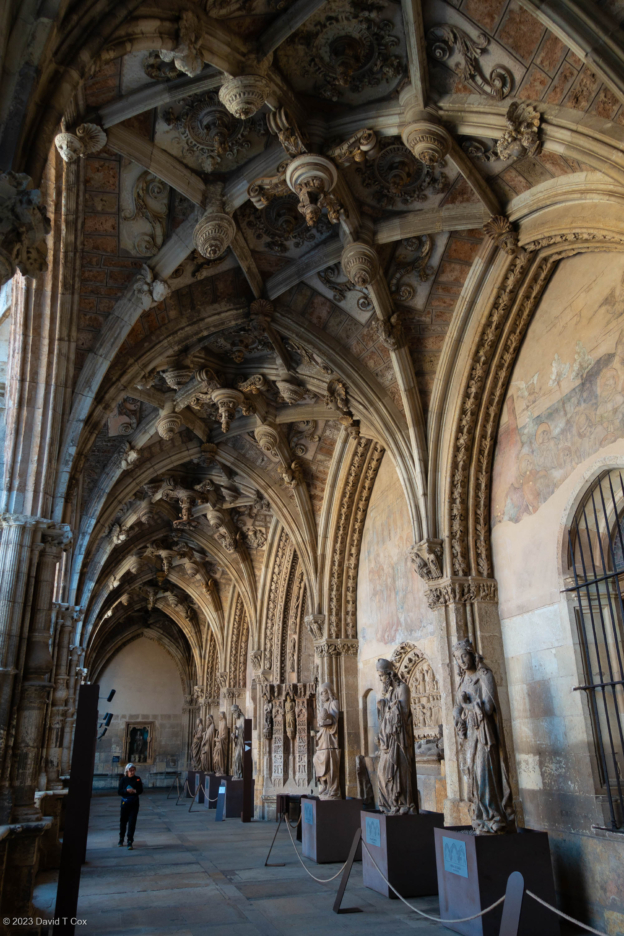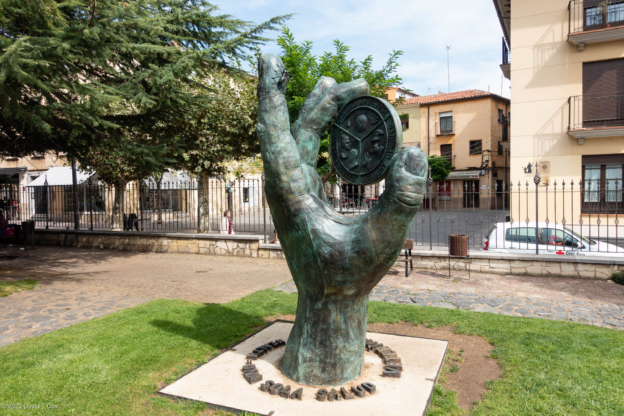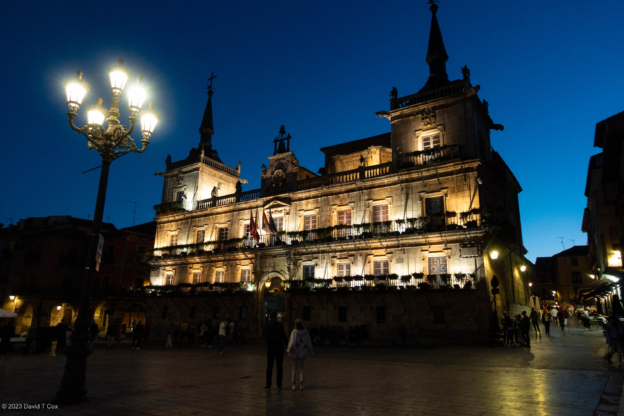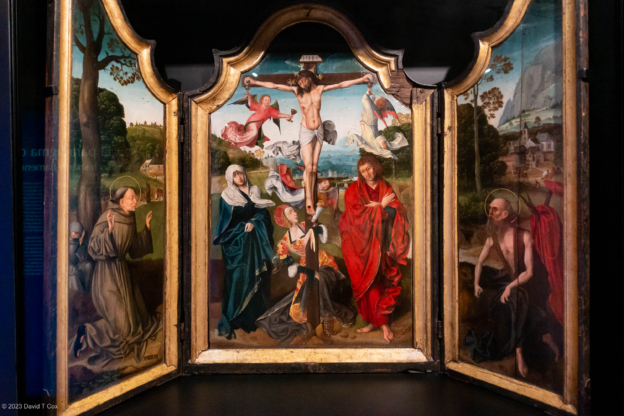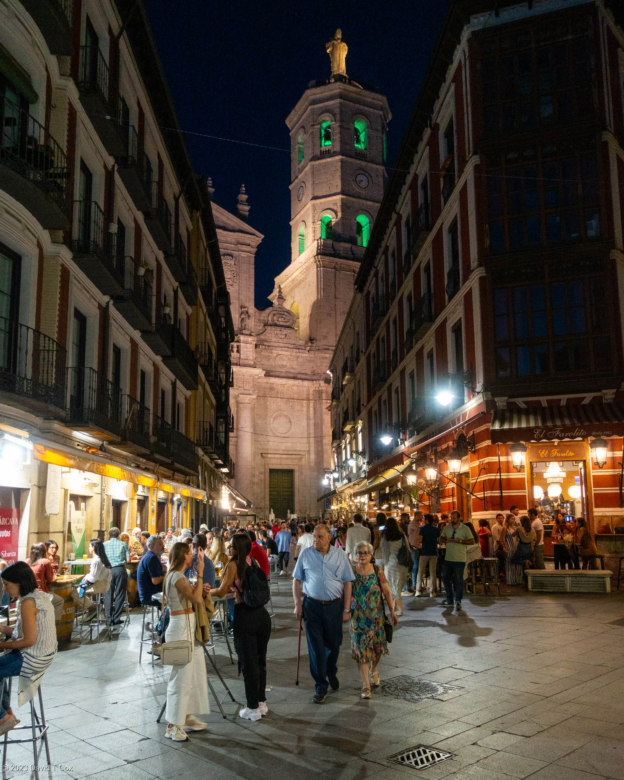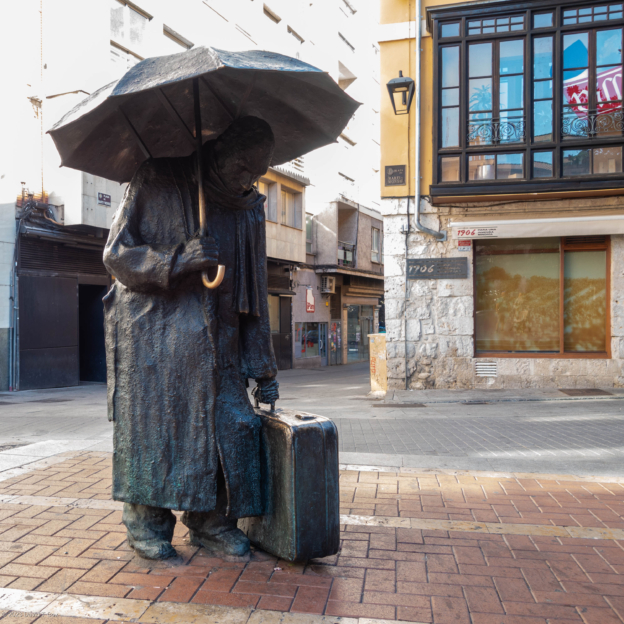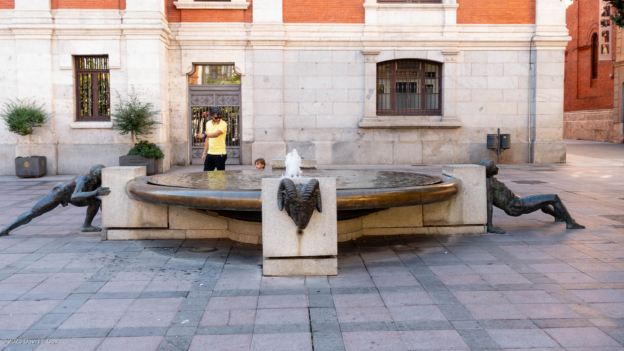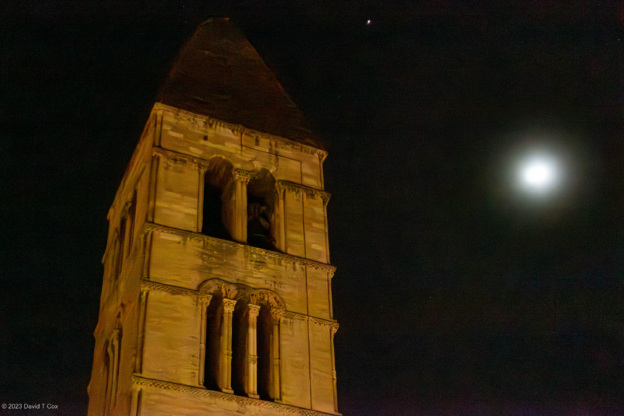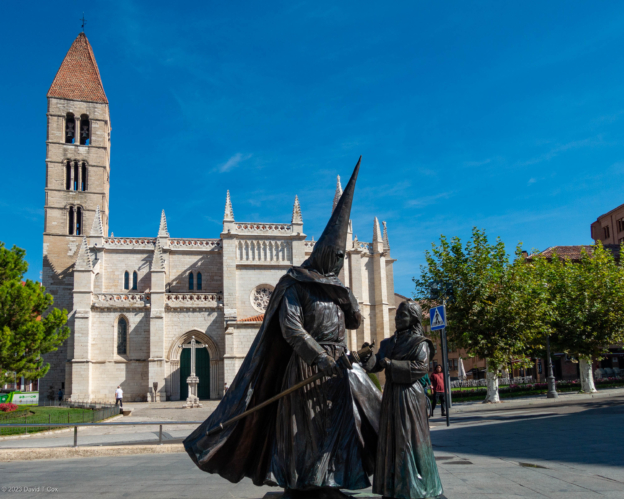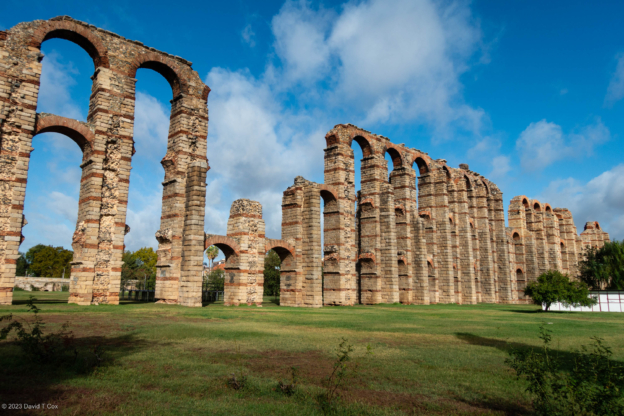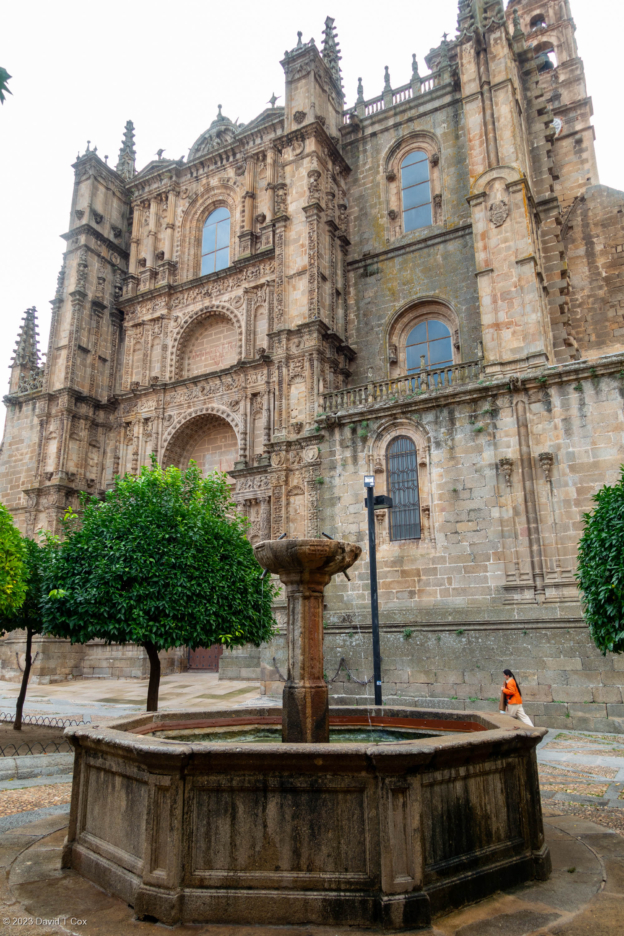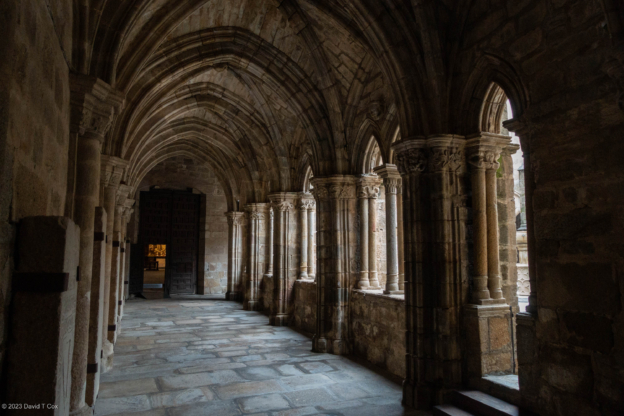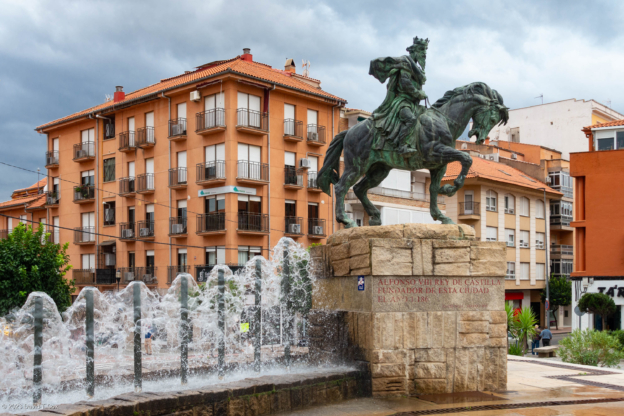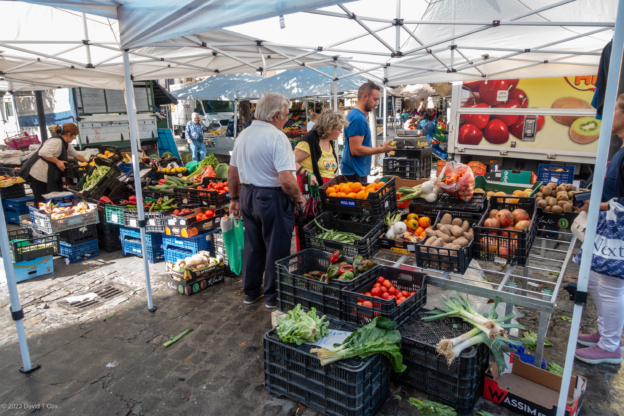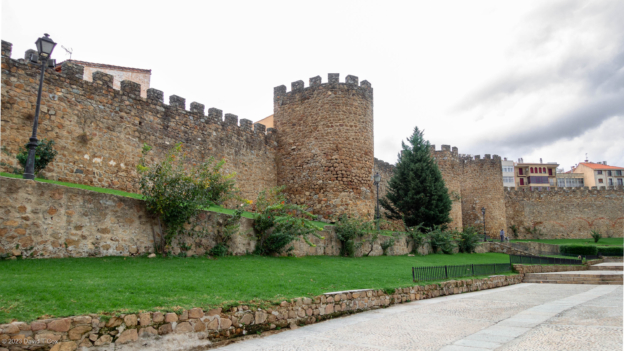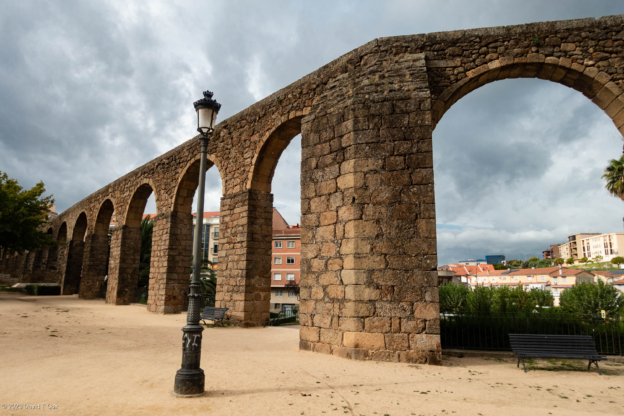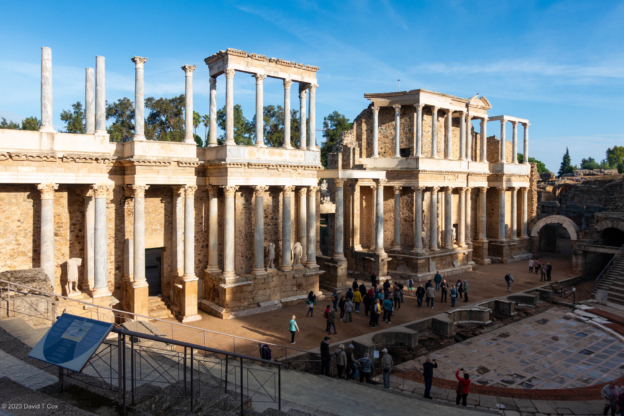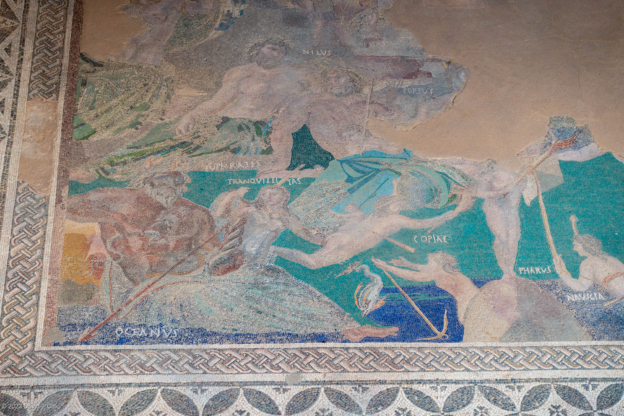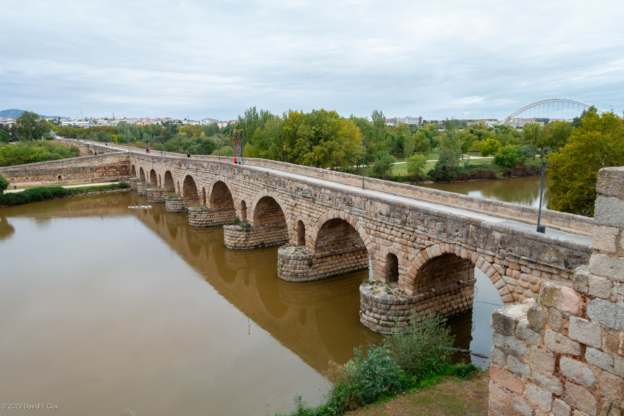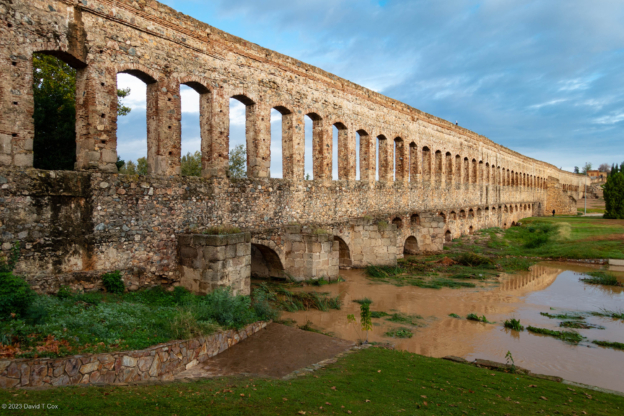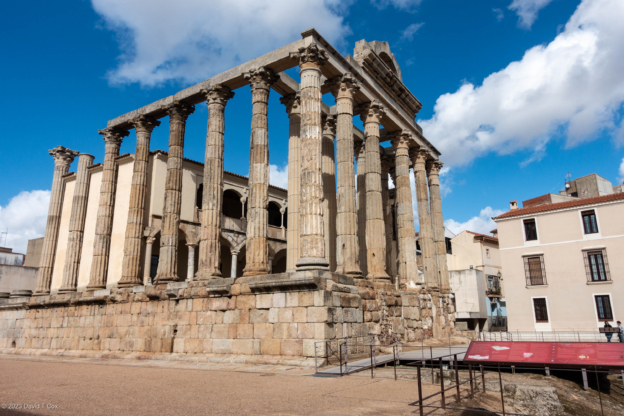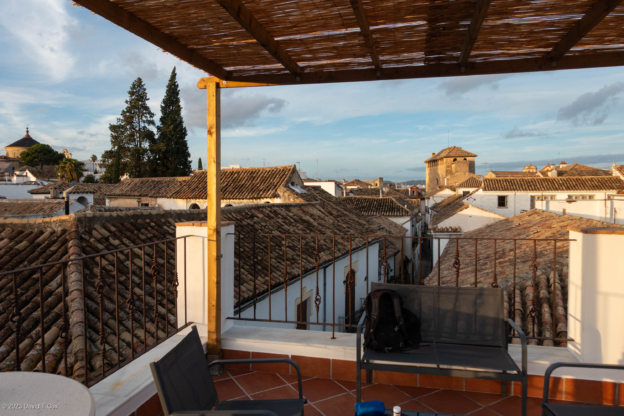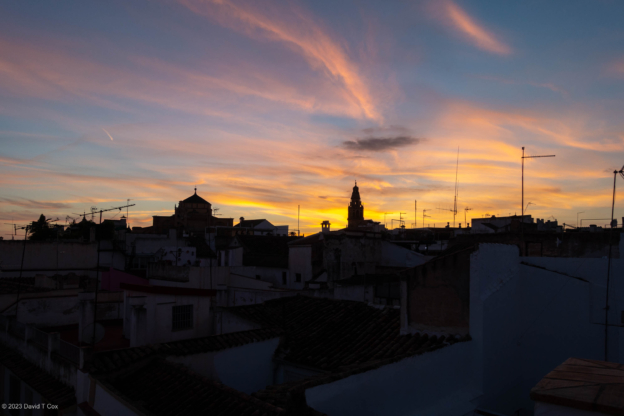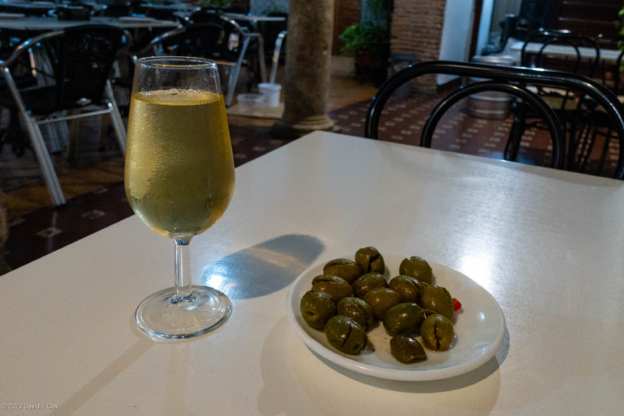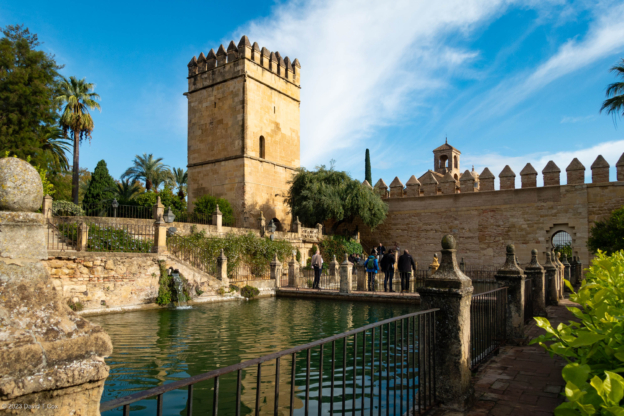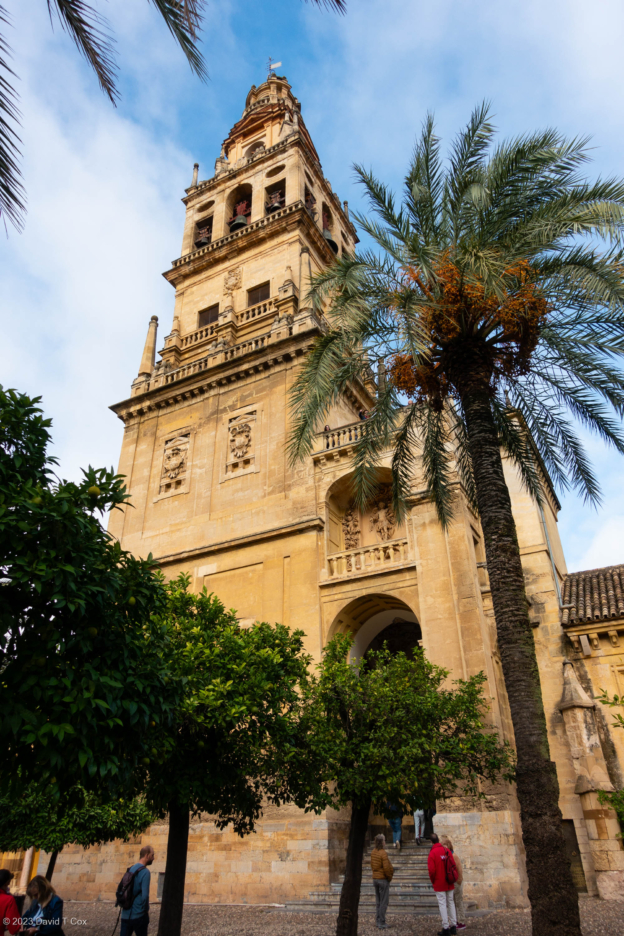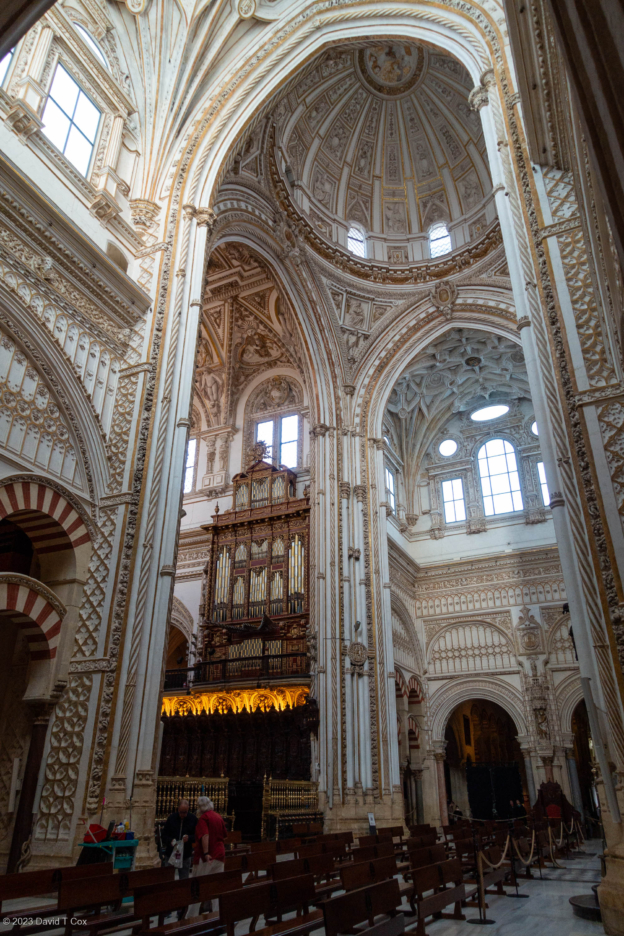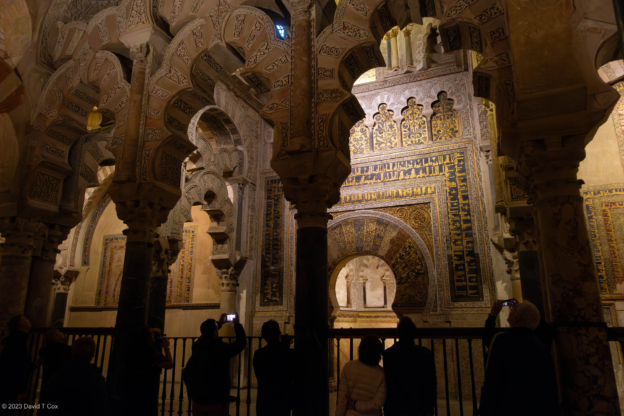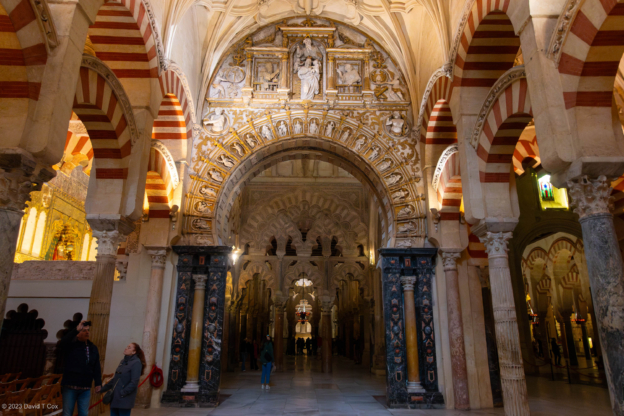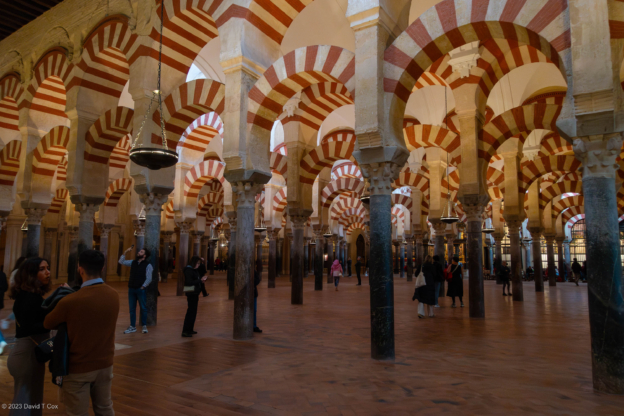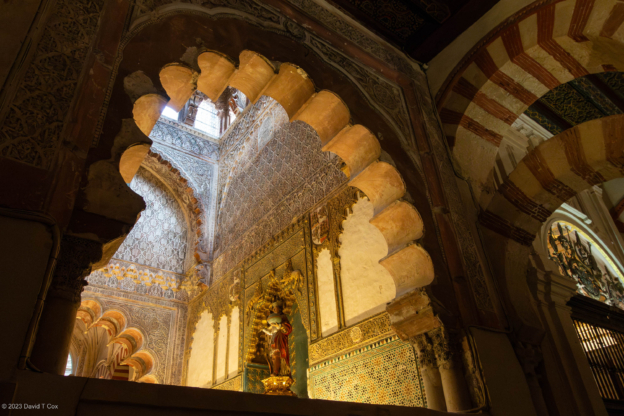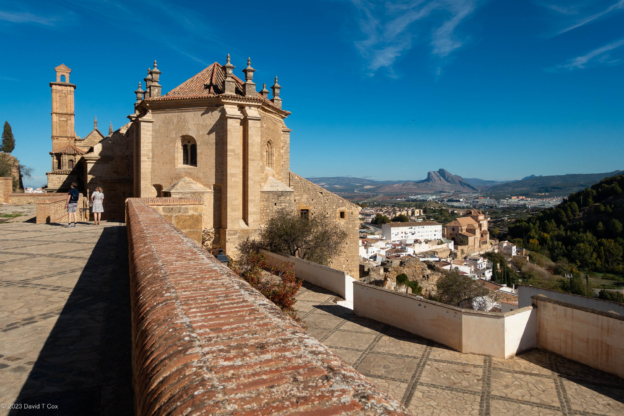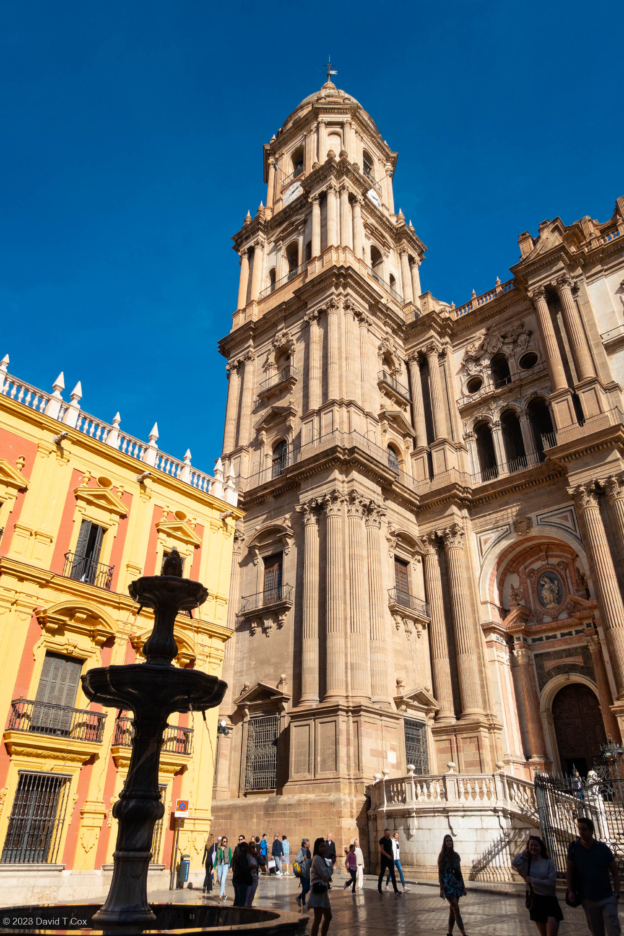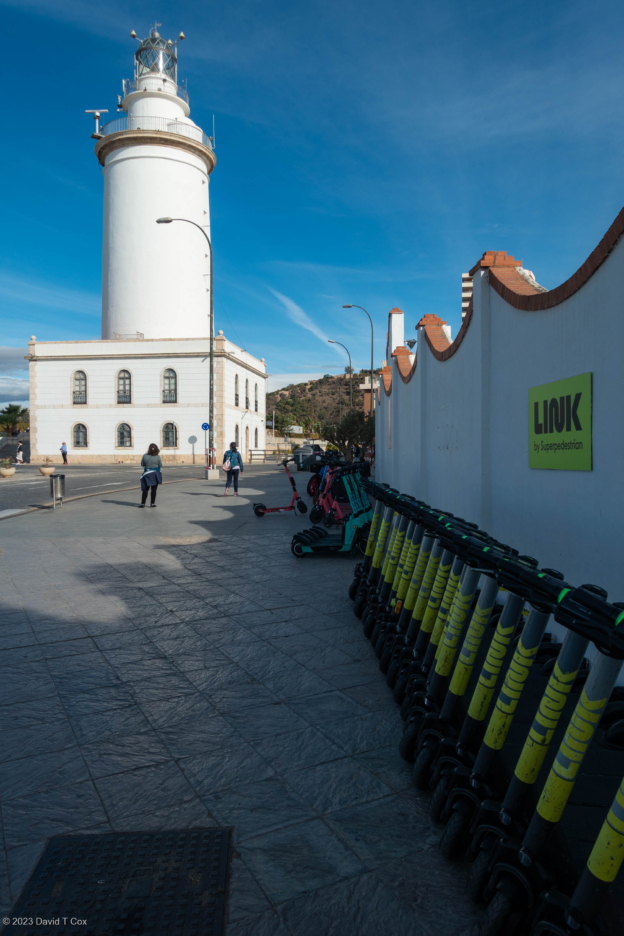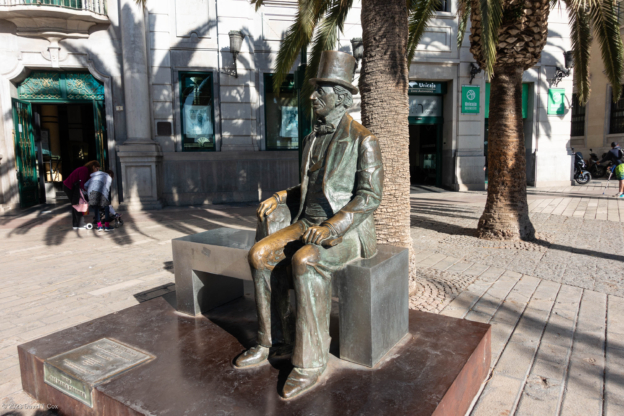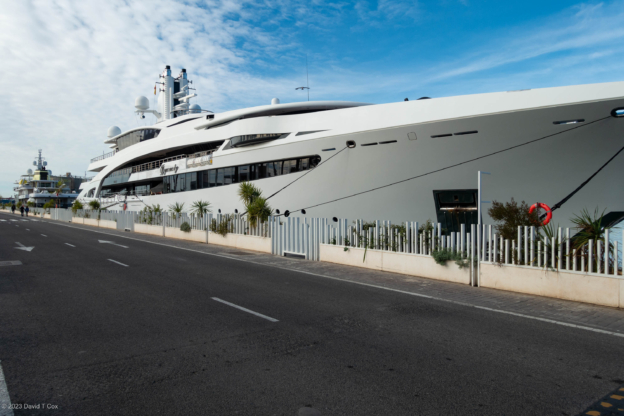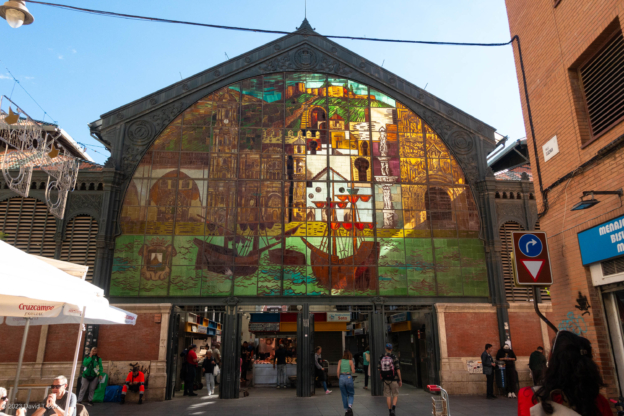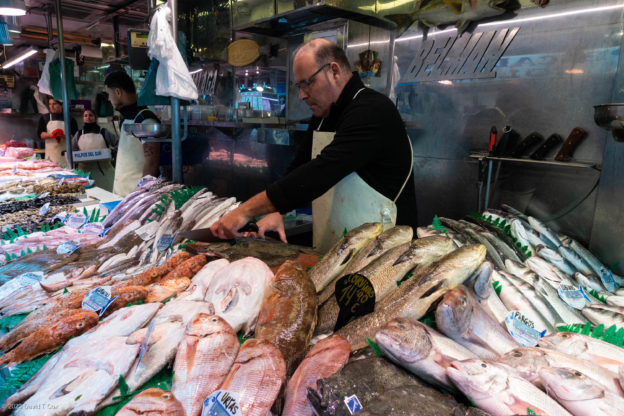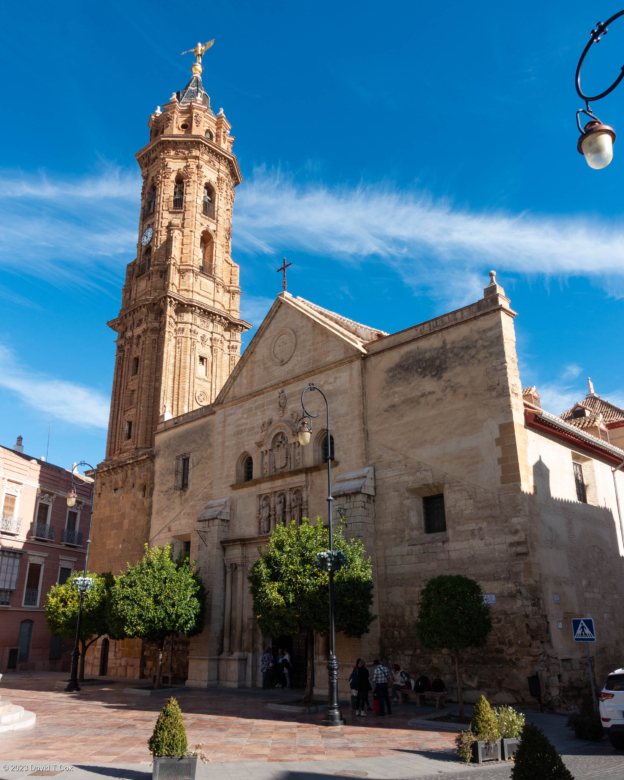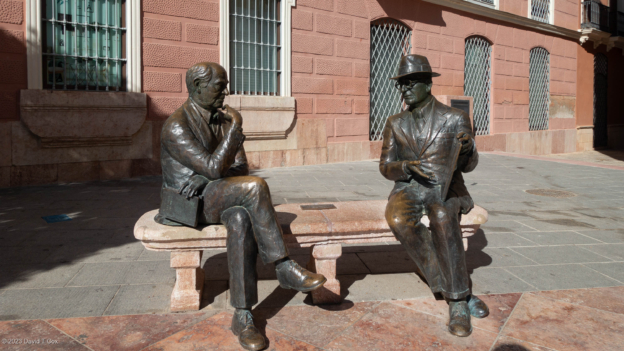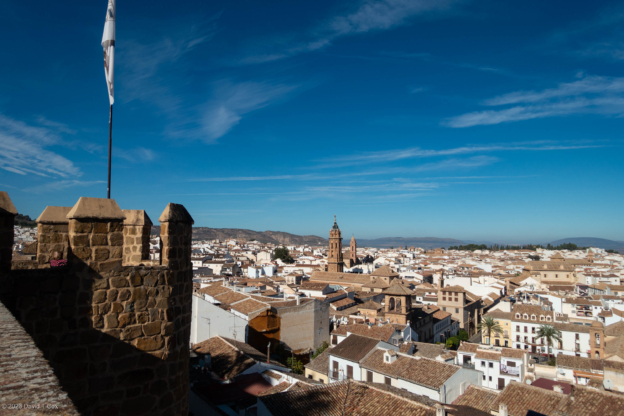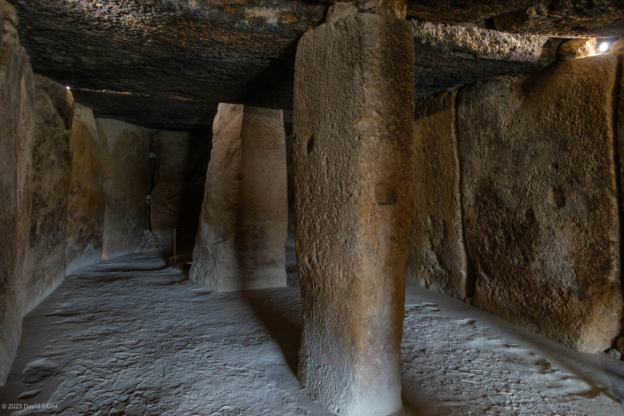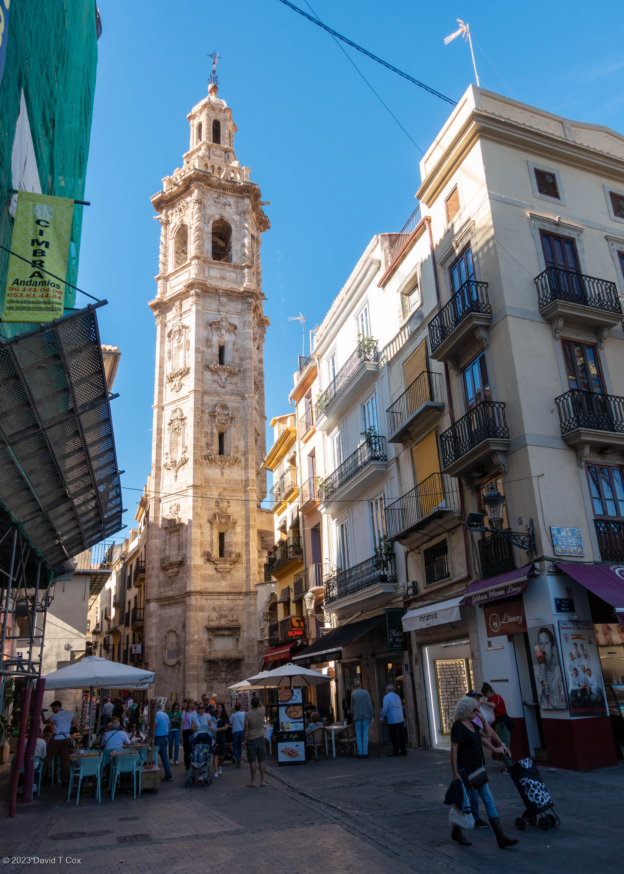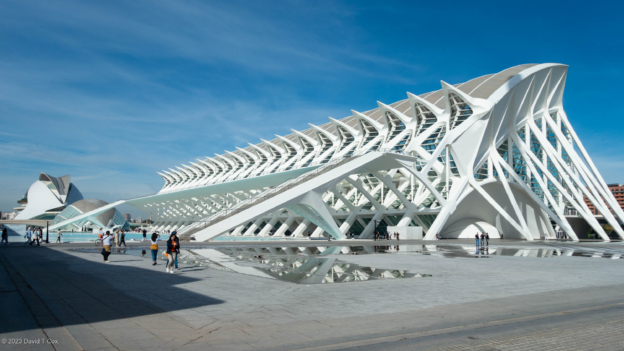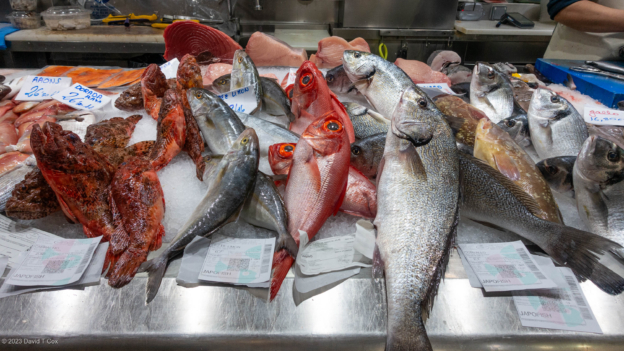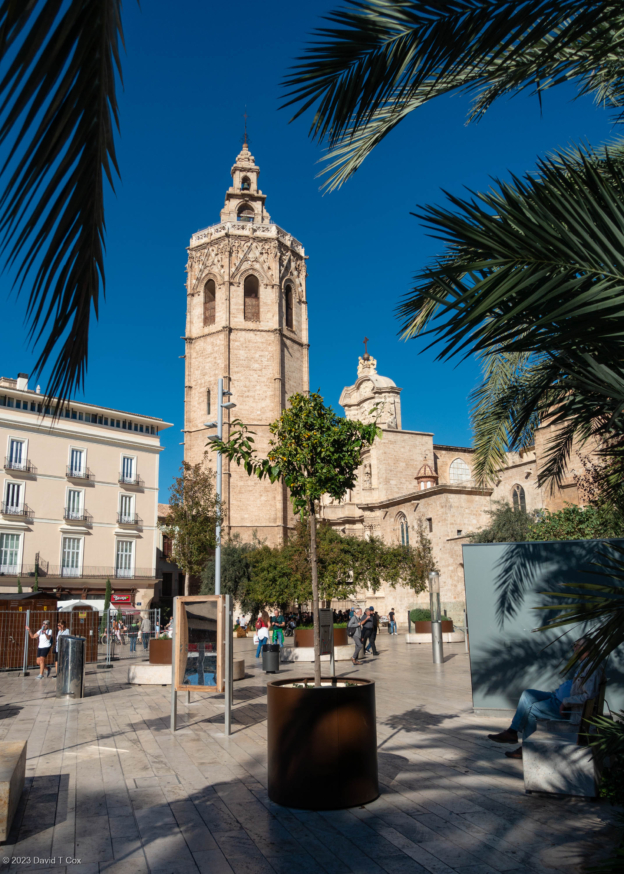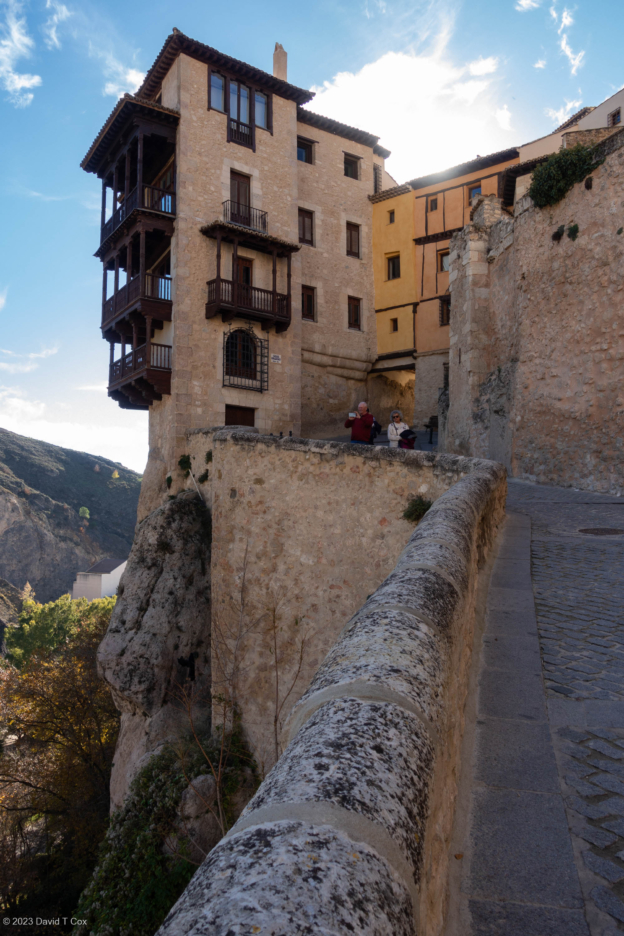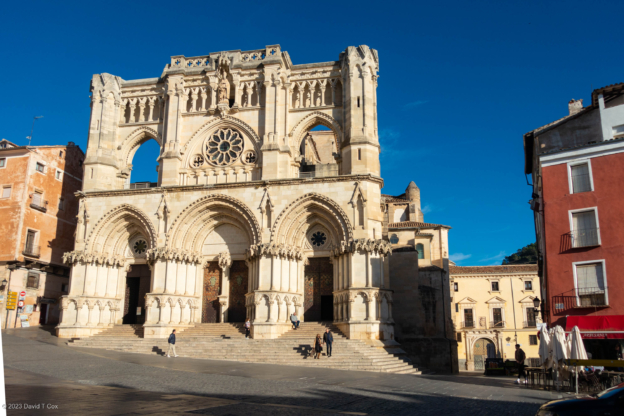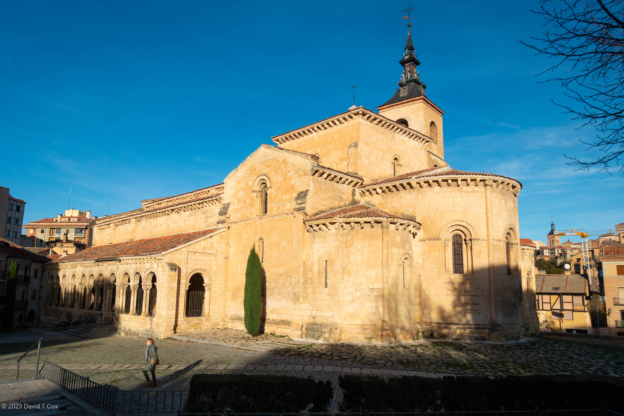From Valladolid I traveled the short distance to Salamanca on October 5; transport was on a slow local train that terminated its line just a few blocks from the famous Plaza Mayor of the city. By slow I mean the train only ran up to 100 mph, compared to the Avias which go 160 and the Aves 230. Designed with Renaissance touches, and considered by many the most beautiful plaza in Spain, the Plaza Mayor is a massive square completely enclosed by 4 story pinkish yellow stone buildings, with 10 arched entrance/exits. As usual in Spain, the plaza is filled with outdoor cafes and restaurants on all sides. I stayed in the Ikonik Hotel fronting the Mercado and 1 block from the Plaza. Below my window was the outdoor seating for the local chocolate and churros café. Within 1 block were 2 Michelin starred restaurants, one right next to the outdoor café where I sat many late afternoons for my couple of beers or wines, and smoked my pipe; that is, I smoked my pipe most evenings until someone apparently absconded with my pipe pouch and paraphernalia while I visited the aseos (restrooms).
Always fun to watch the groups of young men, usually 8, or woman, out on Saturday evenings for pre-marital bachelor or bachelorette parties of all night rowdiness. The best men dress the “unlucky” one, soon to leave bachelorhood, in the most embarrassing outfits and require the most embarrassing acts conceivable. My first Saturday, the group a table down from me on the patio, had the unfortunate man in a bright pink full body rabbit outfit with enormous floppy ears, a gross straw-colored wig, and required him to continuously ring a large cow bell whenever someone spoke to him. Even worse was the poor guy I watched in the Plaza Mayor of Leon, whom his buddies had dressed in a lacy blue tutu, had carrying a yellow rubber chicken, and while they went off to a nearby bar to drink, left him taped to the lamp pole in the center of the plaza to have to answer to the general public who made snide remarks. I cannot understand how Spain has a high marriage rate.
I enjoyed my many visits to my long-time favorite tapas taverns, the Meson de la Concha and Ruta de Plata. The latter wood fire grills pork ribs, pancetta (unsliced chunks of bacon meat) and sausages, dripping with mouth-watering fat. I always have maintained a friendship with the grill master – this trip, my friend the prior grill master, Miguel, of many years had left, replaced by 6 foot 8 Sergio. Sergio, my first evening of conversation and showing him old pictures, intervened in the super crowded interior to personally serve me wine, and then grilled me 8 ribs for which he refused to charge. By the time I left my fingers were coated with dripping pig fat as my poor stomach was trying to deal with 5,000 calories of meat and red wine to bind it together. I survived. My next time there Sergio and the waiters called “David, we have something of yours”, and astonished me with the recovery of my lost pipe pouch. I do not remember how it got from the prior sidewalk café to the grill. Anyway, I was ecstatic, had some pictures taken of me and Sergio, and sat down to more wine and plates of sampling the grill fare for which Sergio would not charge me. Incredible place.
I had the unfortunate experience of again blindly planning travel right into a national holiday. I had booked ahead my next stop in Plasencia, just south of Salamanca, only to find 6 days in advance that of the 7 daily buses, no seats were available except a midnight bus arriving 2 in the morning. I had no problem cancelling my booking, but then could find no rooms over the holiday weekend in Salamanca, or even in Madrid Letras Barrio, or nearby Avila or Segovia. Finally, I found a late listed apartment available at last minute and was able to book through the weekend, and so simply rescheduled my route on to Plasencia.
I have revisited the fabulous twin cathedrals, the Viejo built from the 12th century starting with its amazing Romanesque dome, and 13th century interior wall paintings in a back chapel. Its altarpiece is a gigantic semi-curved soaring masterpiece of 53 individual paintings framed in gold, with the ceiling semi circular cupola overhead bearing a giant painting of the last judgement. The altarpiece was designed and painted by Dello Delli and 2 brothers from Florence, in the early 15th century, just the start of the Italian Renaissance. The new cathedral is mostly Gothic in architecture, but with fabulous Renaissance Plateresque designs on all exterior entrances. Unlike anywhere else, the old cathedral was not destroyed to build the new, but had the new built cloaking around parts of the old. Thus, the two form a single structure, with entrance to the old through the new. The upper terraces view of the old and new domes together is, to me, one of the most fabulous architectural wonders of Spain. I have posted before, but of course do so again, some photos below.
Close by the cathedrals the 12 century University facade is also covered with Renaissance Plateresque carvings. In the nearby Claustro is the “Night-sky of Salamanca,” – a half planetarium sky dome with a heavily restored painting showing the major constellations and stars originally painted by Gallego in 1473. This was 19 years before Columbus sought guidance for his voyage to the New World.
Other always-favorites include the Roman bridge across the Rio Tormes, the San Esteban Monastery with its Churriguera brother’s massive wood-carved gold-leaf Plateresque altarpiece, and the Renaissance cloisters in the Convent de las Duenas, the Casa de las Conchas and the 12th Century University.
Last evening I was having a beer on a small street a block from my apartment, and was told they had to remove all tables and stuff from the street by 7:30 for a religious procession to march up the street. I went inside and waited as dozens of others did to see the sight. After an hour and half with no procession I gave up and bought some take-home food, and went to my apartment to eat. At bed-time I realized I was hearing the drums and music of the nearby procession, which kept getting louder, until I realized it had turned off the street where I had waited, and now passed directly under my two balconies. Who could guess.
Monday, I travel by bus a little south to the small hill town of Plasencia, from there Merida and from there who knows. Later. Dave
-

-
Plaza Mayor, Salamanca, Sp
-
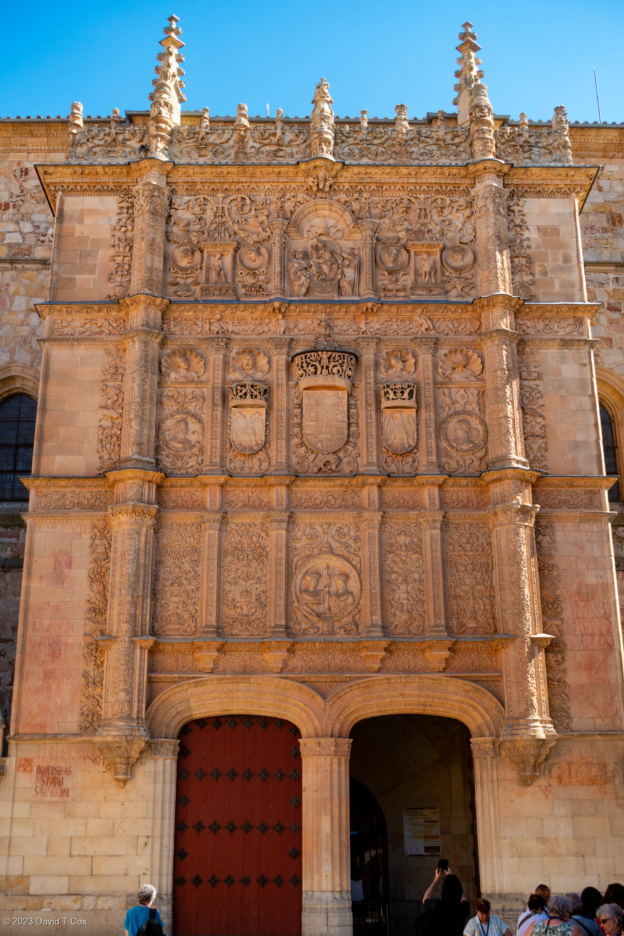
-
university facade Salamanca, Sp
-

-
El Cielo de Salamanca, restored dome painting of night sky Salamanca constellations, by Gallego, 1473, Salamanca, Sp
-
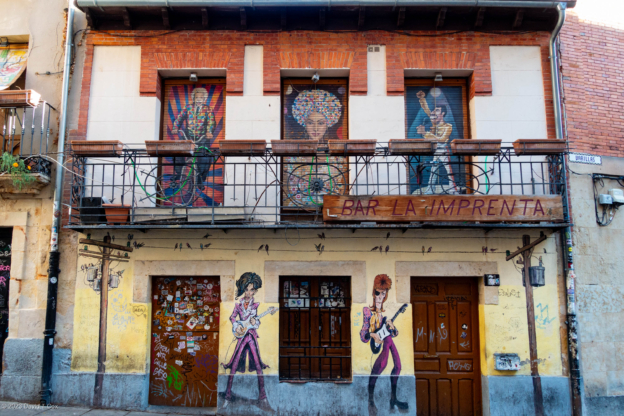
-
building front grafiti art, Salamanca, Sp
-
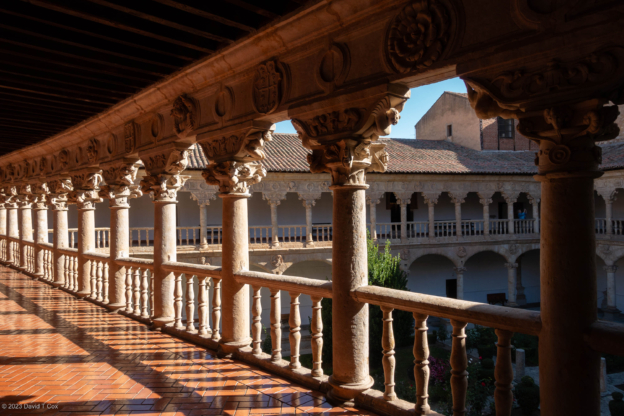
-
Cloustro de Conventa de las Duenas, Renaissance, Salamanca, Sp
-

-
Palacio de Monterrey, Salamanca, Sp
-
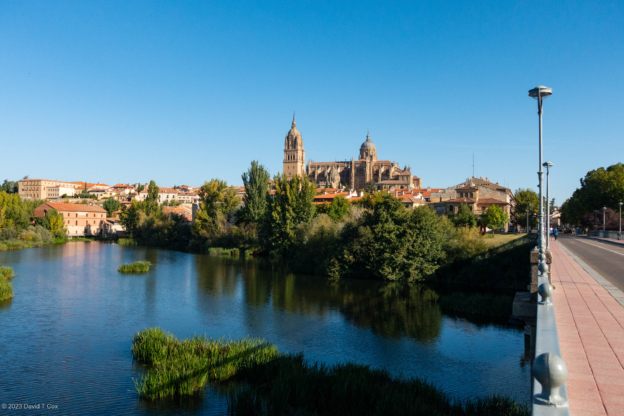
-
Enrique Estevan Bridge & cathedral from Rio Torme, Salamanca, Sp
-

-
Catedral Nueva gothic & Viejo Romanesque Towers pano, Salamanca, Sp
-

-
San Martin Capilla paintings 12th-14th C, one with Castilla y Leon signed Anton Sanchez and dated 1262, Catedral Viejo, Salamnaca, Sp
-
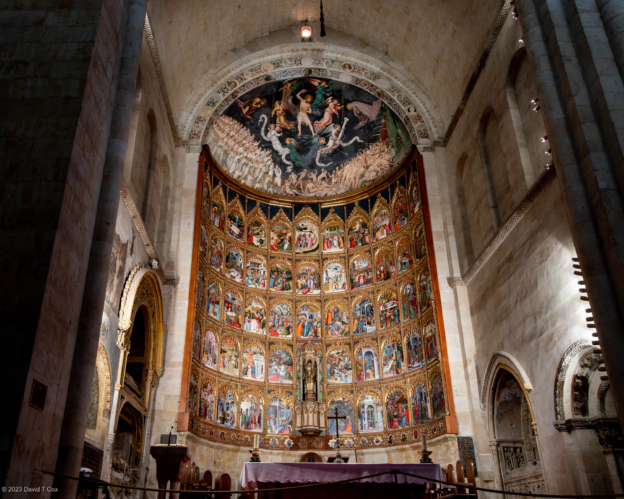
-
Altarpiece Retabla and ceiling cuppula, 15th C, Florence painter, Catedral Viejo, Salamanca
-

-
ceiling cuppula Last Judgement, 15th C, Florence painter, Catedral Viejo, Salamanca
-
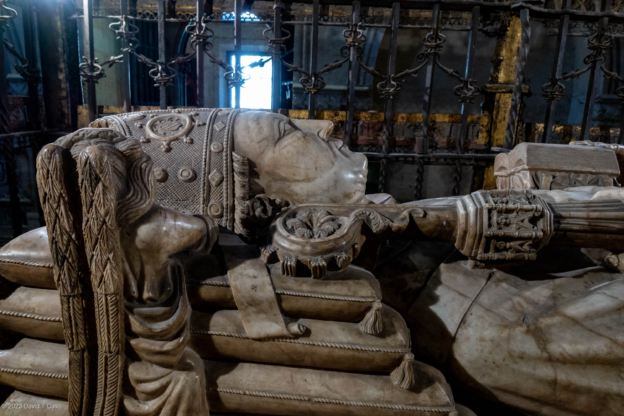
-
marble sarcophogus, Claustro chapel, Catedral Viejo, Salamanca, Sp
-

-
Convento de San Esteban, Renaissance, Salamanca, Sp
-

-
Clercia and Casa Concha, Salamanca, Spain
-
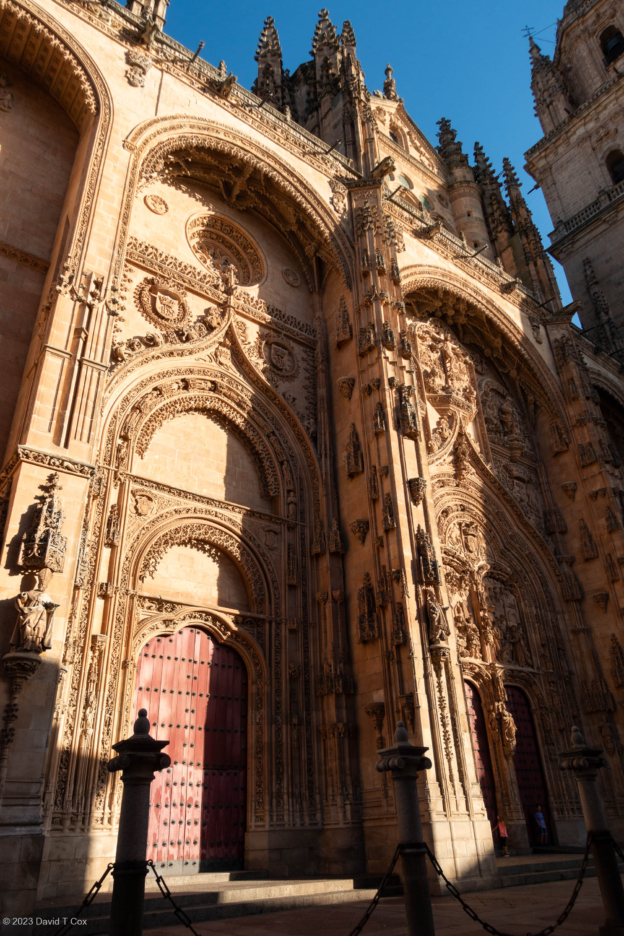
-
Catedrales Nuevo E entrance Plateresque, Salamanca, Sp
-
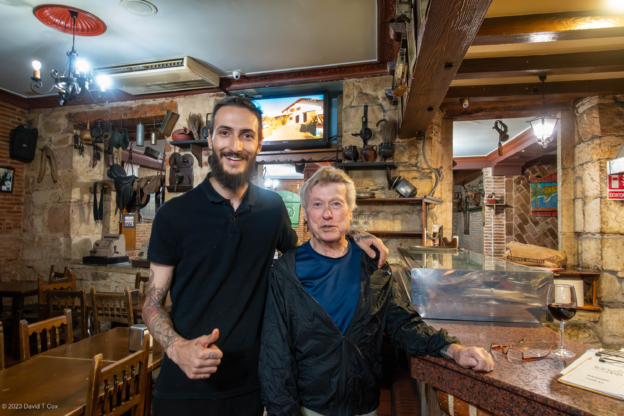
-
Dave with Grill Master Sergio, Ruta de Plata Tavern, Salamanca, Spain
-
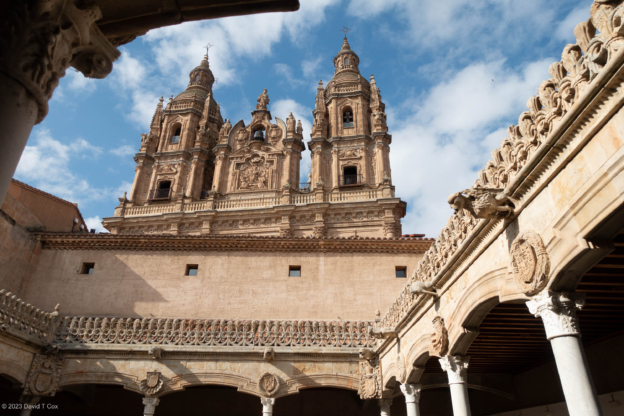
-
interior Casa de las Conchas renaissance claustro viewing Clericia, Salamanca, Spain
